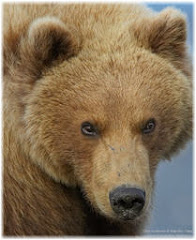Sea Urchin
Red sea urchins,
Strongylocentrotus franciscanus,
belong to the Phylum Echinodermata and class Echinoidea. This
phylum also includes sea cucumbers and sand dollars, one of
their common traits is their radial symmetry. They vary in
color between a uniform red and dark burgundy and crawl slowly
over the sea bottom using their spines as stilts.
The red sea urchin is the largest of the sea urchins, with a
maximum "test", or outer skeleton, diameter of more than 18 cm
and a maximum spine length of 8 cm. The test is made up of 10
fused plates that encircle the sea urchin like the slices of
an orange. Every other section has holes through which the sea
urchin can extend its tubed feet. These feet are controlled by
a water vascular system. By changing the amount of water
inside, the animal can extend or contract the feet. The tip of
the tube foot is shaped so it can act like a suction disc.
Spines can also be used for locomotion.
Reproduction occurs between March and September in
Southeast Alaska. Urchins are broadcast spawners with
external fertilization and aggregate during spawning.
Female urchins may produce 100,000 to 2,000,000 eggs into
the sea where they are fertilized. After fertilization,
they develop into a morula and eventually become 8-armed
echinopluteus larvae which are herbivorous, feeding on
phytoplankton. After the larvae stage, they develop into
juveniles and eventually settle onto the substrate. After
settling, a rapid metamorphosis occurs including
development of spines and tube feet and then internal
organs form similar to an adult sea urchin. They seem to
reproduce best when in dense aggregations.
Small urchins (less than 5 cm test diameter) often hide
under the adults. Adult urchins can release a chemical cue
that causes the young to aggregate underneath them when
the adults detect the presence of certain kinds of
starfish. Some research suggests that urchins can live
over 100 years, and found some near Vancouver Island that
may be 200 years old.
Field studies of annual growth rates in Southeast Alaska
indicate an annual growth increment between 0 and 20 mm.
Growth rate is generally greatest among urchins between 20
and 40 millimeters, with large variation among locations
and years. Slower growth occurs in areas exposed to open
ocean conditions. By age ten urchins have almost stopped
growing in diameter and growth slows considerably.





